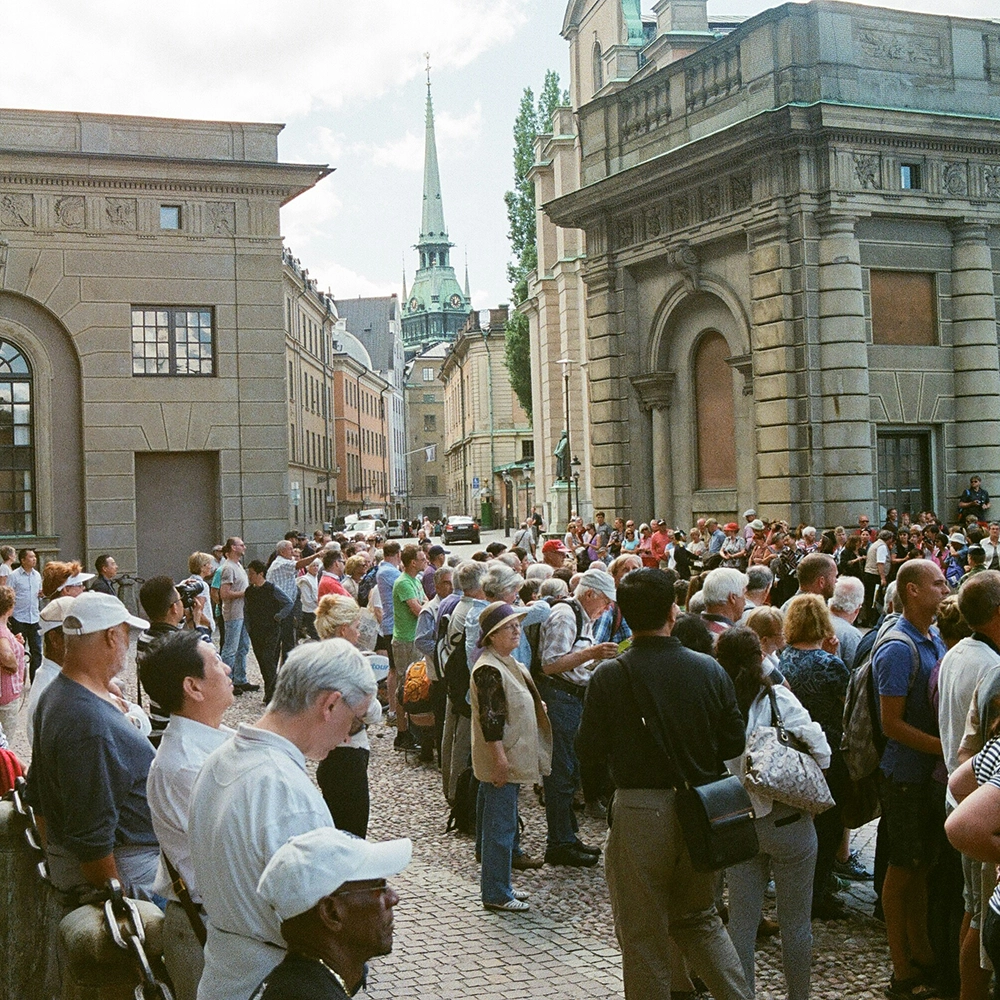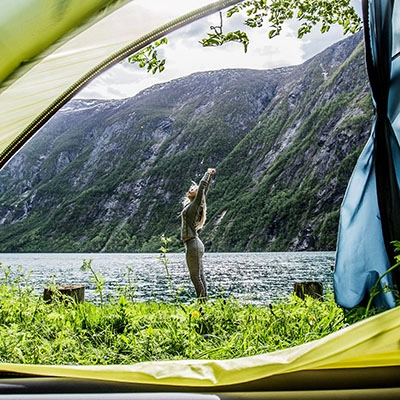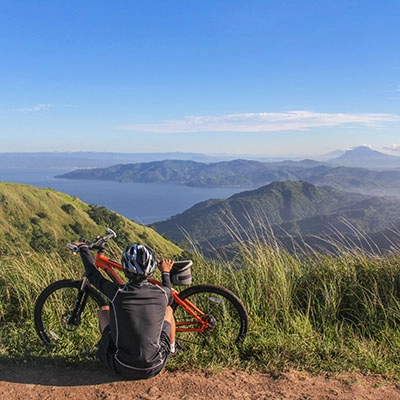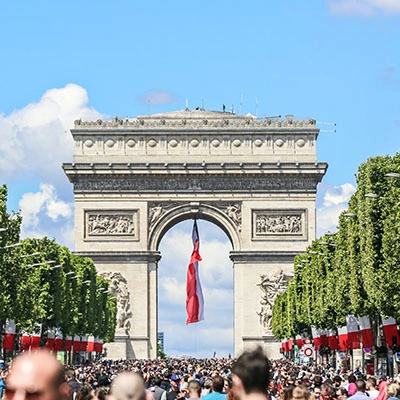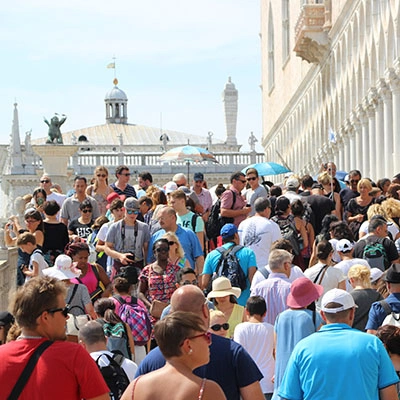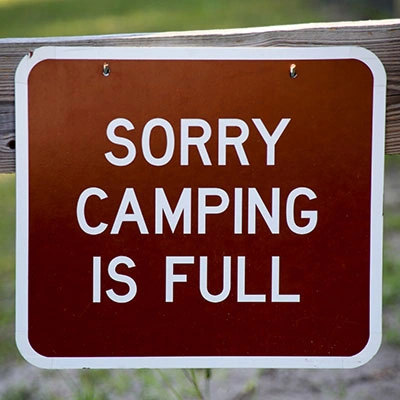You love to travel, but you’re tired of going to the same places and doing the same things as everyone else. Beyond being bored, you have a gut feeling that that kind of travel isn’t even the “right” thing to do. What you need is alternative tourism.
Alternative tourism is often named as the antidote to a number of potentially harmful travel practices. At the top of that list is overtourism.
What Is Overtourism?
Overtourism happens when too many people visit a destination, causing harm to that place. Effects of overtourism can include:
- Diluting of the local culture
- Making the destination too expensive for locals to live there
- Physically damaging infrastructure or cultural sites
- Negatively impacting the climate and environment
How to Prevent Overtourism
To combat overtourism, many countries are encouraging tourists to explore cities beyond the usual hot spots. The French government reported that 80% of its tourism is located in just 20% of the country.
If you still want to see the iconic destinations — there is only one Eiffel Tower, after all — rest easy knowing that there are still ways you can visit responsibly.
In addition to prioritizing less-visited destinations, some of which we’ve listed below, you can also try some methods of alternative tourism with more sustainable and local-friendly practices.
What Is Meant by Alternative Tourism?
Alternative tourism, sometimes also called responsible travel, anti-tourism, ethical tourism, and a host of other names, is a response to mass tourism and its negative impact. Through the various types of alternative travel, we can minimize the negative impact we have on a destination, its environment, culture, and economy.
There are different ways you can become an alternative traveler, but these three basic rules are at the heart of them all:
- Be original. Instead of all-inclusive resorts and package tours, think outside the box about where you can travel and what you can do. Going off the beaten path can lead to authentic, once-in-a-lifetime experiences that support your destination and its people rather than put undue stress on them.
- Be intentional. You don’t just fall into alternative travel. Every decision, from where you go to how you get there and what you do upon arrival, has meaning and purpose. Your activity is mindfully chosen.
- Be sensitive. Even seemingly small actions can have large impacts. Be curious and take time to understand how your presence affects a community. Give back when you can.
Types of Alternative Travel
For as many ways as there are to define alternative tourism, there are just as many ways to practice it. Use these examples of alternative travel as a jumping-off point when intentionally planning your original trip.
1. Sustainable tours
If you’re being intentional about traveling in a way that doesn’t harm the environment, ecotourism and sustainable tours are for you. You want a trip that reduces negative impact or, even better, leaves your destination better than it was before your arrival.
Ways to plan an eco-friendly, sustainable trip include:
- Choosing an eco-friendly destination
- Booking ecolodges or hotels that have eliminated single-use plastics
- Opting for public transportation like trains and buses instead of using a personal vehicle
- Walking or riding a bicycle to sightsee
- Dining at restaurants that use locally sourced ingredients
- Opting for ethical wildlife encounters rather than animal-based tourism that mistreats wildlife or harms their ecosystem
- Voluntouring with a project that cleans pollution from communities or restores wildlife preserves
2. Voluntourism
It’s important to take time for yourself on vacation, but if you’re looking for an alternative way to get away, consider volunteering abroad. By giving back to the community you visit, you have the chance to contribute to that community rather than just take.
Be mindful of the project you take on and the organization you volunteer with. Some are more responsible than others. Make sure you’re asking yourself important questions before voluntouring so you know you’re doing the right thing.
There are plenty of ways to be a responsible volunteer abroad through projects such as:
- Building homes, schools, and health clinics
- Assisting with agricultural and urban farming programs
- Teaching English (or another language)
- Helping with community beautification projects
3. Unplugged travel
Like many Americans, I sometimes find it hard to fully break the ties with work when I go out of town. Email, phone notifications, and all those little technological “conveniences” are a little less helpful when you’re trying to disconnect on vacation. That intentional disconnection is one of the benefits of choosing to go off the grid or to do a digital detox when you travel.
Unplugging from technology can improve your health with lower stress, better sleep, and improved mood, among other things.
Lower stress not only feels good, but it’s also related to physical health like lower blood pressure and heart health. Better sleep helps our emotional as well as physical wellness; we need sleep for things like muscle recovery and regulating hormones that affect our weight. Being mindful and present improves our social interactions and relational health, which can be so important for people who experience depression and feelings of isolation.
Not all of us have the skills or desire to totally remove ourselves from civilization. Thankfully, there are ways to get the off-grid benefits of travel without going backcountry camping with nothing but a tent, a roll of duct tape, and your own thoughts.
Try these ways to do a digital detox while you travel:
- Don’t get the international plan on your cell phone. You won’t be as tempted to text or post everything you do, so you’ll be more likely to leave your phone at the bottom of your bag. Chances are that you’ll still have internet access, though, so if you do find yourself in an emergency, you could still send a quick email or use an app like WhatsApp to contact someone.
- Choose a destination that has limited internet access (or at least the perception of limited access). I’ll confess that when I went to Nicaragua, I just told everyone that I wouldn’t have internet, period. Was that entirely true? No. But most people back home didn’t know much about Nicaragua, so they took my exaggeration at face value.
- Ween yourself off your devices for a few weeks before your trip. Instead of quitting cold turkey, make a plan to use your phone and other technology a little less each day prior to departure. This can help you feel less panicky when you aren’t constantly checking your email from the beach.
- Ban tech-based entertainment. Make a commitment to yourself — and with your kids — that you will avoid Netflix, YouTube, TikTok, and whatever else you use stay mindlessly preoccupied. Remove entertainment apps from your devices, or better yet, leave your tablets and computers at home. Instead, read a book, play car bingo or a board game together, chat with a stranger, be present with each other and have good conversation.
- Set clear expectations with people back home — work, family, friends — that you will be out of reach during your trip. Make it known that you won’t be checking email until you get back. As long as you clearly communicate this plan, it’s not your fault if Linda from HR gets upset that you didn’t respond immediately.
- Put your phone on airplane mode, even if you aren’t flying. That will quiet all those pesky notifications while still giving you access to your phone in case you do need to contact someone or want to use it to take photos.
4. Slow travel
Slow travel is the idea that, rather than destination hopping and cramming as much activity in your trip as possible, you take your time and immerse yourself in one or two communities.
Some have given this type of travel the moniker “nothing-cations,” meaning that they intentionally carve out time for some healthy nothingness. Others praise slow travel because they feel like it gives them the opportunity to travel like a local or have more meaningful travel experiences.
Slow travel has many personal and environmental benefits. Some say that slow travel can improve our mental health as it gives us time to breathe and reflect, taking a break from the hectic pace of our everyday lives.
When it comes to sustainability, slow travel can be more eco-friendly because we’re using fewer resources on transportation. You may even be able to go without a car if you stay in a smaller community or rely on public transit to get from Point A to Point B.
Plus, many slow travelers choose to rent a vacation home, which allows them to cook their own meals. For some, this lets them focus on using locally sourced ingredients, reducing food waste from oversized restaurant portions, and on contributing to the local economy by shopping at farmer’s markets.
5. Adventure travel
Why do we need a definition of active tourism? We know what it means to be active, right? Well, yes, active tourism and adventure travel tend to be exactly what you think they are: hiking, biking, kayaking, skiing, and other sporting activities during your trip.
But it can also be more than that. Adventurati Outdoor highlights active tourism’s ability to allow “the tourist to step outside their comfort zone.” So while this could include an activity that’s physically exhilarating like climbing a mountain, it could also be something mentally stimulating that causes a bit of culture shock.
There are varying degrees of risk in active travel. So-called “hard adventure” activities like rock climbing and caving have higher levels of danger (and may not be covered by travel insurance, so it’s best to check with an agent before assuming one way or the other).
“Soft adventure” activities — camping, fishing, taking a safari, riding in a hot air balloon — typically are less risky.
Regardless of the type of activity, though, you’re on the move. If you love adventure tourism, you’re likely someone who recharges their battery through action and excitement, rather than the slow traveler who feels more refreshed in quiet moments.
Alternative Destinations
Many of these types of alternative travel take you to destinations that fly under the radar. Whether you’re looking for more authentic travel experiences, ways to explore in a more environmentally sustainable manner, or want to do your part to fight overtourism, these destinations are fantastic alternatives to highly trafficked sites.
1. France: Swap Paris for Marseille
If 80% of France’s tourism activity takes place in just 20% of the country, where are all the people going? Paris and the French Riviera, primarily.
Large crowds make it difficult to access the very things you came for: the Eiffel Tower, the Louvre, the Palace of Versailles. Plus, high prices make it tough on tourists as well as locals who struggle to afford an everyday life there.
Marseille is the country’s second-largest city, so you’ll still find plenty of quintessentially French experiences. Fortunately, you’ll find it for considerably less money than in Paris or the French Riviera.
The Loire Valley is another great alternative destination, especially if you’re into wining, dining, and castles.
2. Spain: Swap Barcelona for Girona
Barcelona suffers from huge numbers of tourists coming in on cruise ships, looking around for a few hours, and then leaving without spending much money. Their presence contributes to overcrowding, but they do little to contribute to the local economy.
To bypass Barcelona, try Girona, which is only about 60 miles (100km) away. Much like in Barcelona, you’ll find Old Town architecture, pedestrian ways full of shopping and restaurants to remind you of La Rambla, art, and cobblestoned streets. What you won’t find are massive crowds of tourists and prices to match.
If you do visit Barcelona, stay for an extended time so that you can experience this city to its fullest and help it benefit from your tourism dollars. Visit Gaudi sites other than La Sagrada Familia, or if you must cross the highlights off your bucket list, visit at off-peak times.
3. Italy: Swap Venice for Padua
Similar to Barcelona, Venice has fallen victim to cruising visitors who make just a short trip into the city without taking the time to give back to their hosts. There’s already some concern about rising water levels negatively impacting the city, but cruise ships are also damaging the coastline and putting Venice’s very existence at risk.
If it’s the canals of Venice that intrigue you, look to one of the other islands on the Venice Lagoon. They each have their own personality, but they’ll almost all be less crowded and (somewhat) more reasonably priced than their more famous neighbor.
For art and culture, consider a home base like Padua and venture out from this centrally located university town to visit top destinations like Milan and Florence.
To see Venice more responsibly, like Barcelona, stay long enough to contribute to the community and visit during shoulder season.
4. Australia: Swap Great Ocean Road for Gippsland region
The Great Ocean Road in Victoria is routinely one of the most overtouristed spots in Australia. Simply put, it’s incredibly picturesque and there’s so much to see, it could take you several days to drive its length.
Unfortunately, the towns along the road are ill-equipped for that much traffic. Cars often block the roads at the most popular spots, making it nearly impossible for locals to live their daily lives or for emergency vehicles to get through.
Alternatively, you can visit the Gippsland region. It’s also along the southern coast of Australia but east of Melbourne. Enjoy plenty of beaches, including Ninety Mile Beach (it’s, surprise, 90 miles long), as well as mountains, lakes, and the rainforested Tarra Bulga National Park.
5. U.S.: Swap Great Smoky Mountains for Congaree
The Smokys have long been the most visited national park in the U.S. in part because of how close it is to “civilization.” You can easily make a day trip of it from nearby cities.
Also among the most popular parks are the Grand Canyon, Rocky Mountain National Park, Yellowstone, and Yosemite. So many human visitors can put strain on wildlife and the natural environment, causing the beauty you came to experience to deteriorate, sometimes irreversibly.
Visiting these parks during the offseason can give you an equally gorgeous, albeit different, view. Or you can swap them out for one of the nation’s many other parks.
Instead of the Great Smoky Mountains, try Shenandoah or Congaree national parks. Trade the Grand Canyon for Utah’s Canyonlands, or Yellowstone for Lassen Volcanic National Park in northern California.
Travel Insurance for Alternative Tourism
We often hear, “Is travel insurance necessary if my destination has universal healthcare?” It helps to remember that someone is paying for medical care if you get sick or hurt during your trip, even if it isn’t you. In countries that have universal healthcare, that’s the local government or taxpayers. What better way to minimize stress on a destination’s economy than by making sure you can pay for your own treatment?
Travel insurance can cover the expense of necessary medical treatment so that you don’t have to worry about paying out of pocket, and your host culture doesn’t have to foot the bill for you, either.
Travel insurance can also cover trip expenses if you have to cancel or interrupt your trip for a covered reason, if you have a travel delay, or if something happens to your belongings. And when all of Seven Corners’ plans come with travel assistance services, you can focus on enjoying the trip instead of what to do if the unexpected happens.
You’re changing the way you think about travel. Why not also change the way you think about travel insurance and consider it an important part of planning a mindful, intentional trip?
Get a quick quote online or talk to a licensed agent to help find the best plan for your unique trip.
Travel Like a Pro with The Wayfinder
Did you enjoy this blog? Get more articles like it before anyone else when you subscribe to our monthly newsletter, The Wayfinder.
